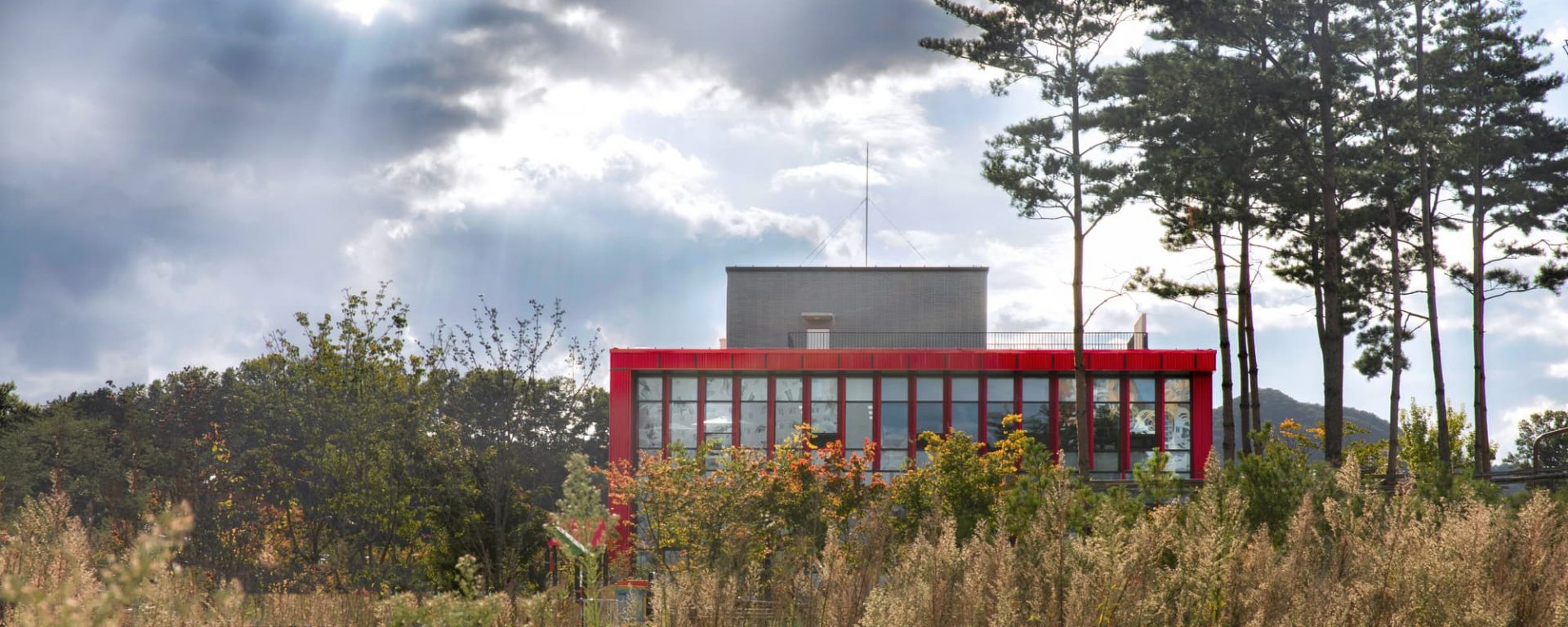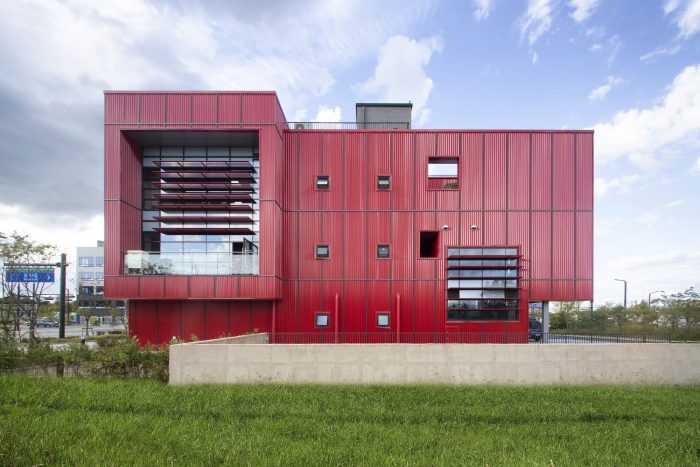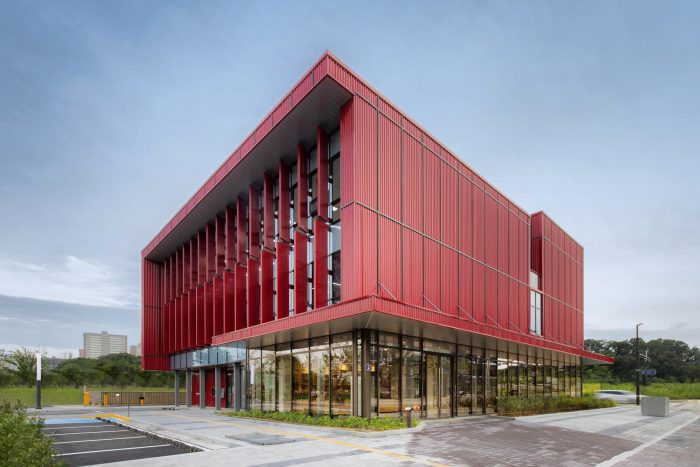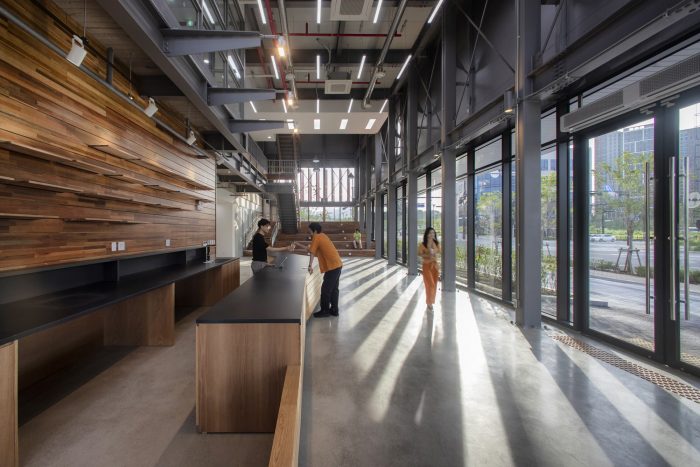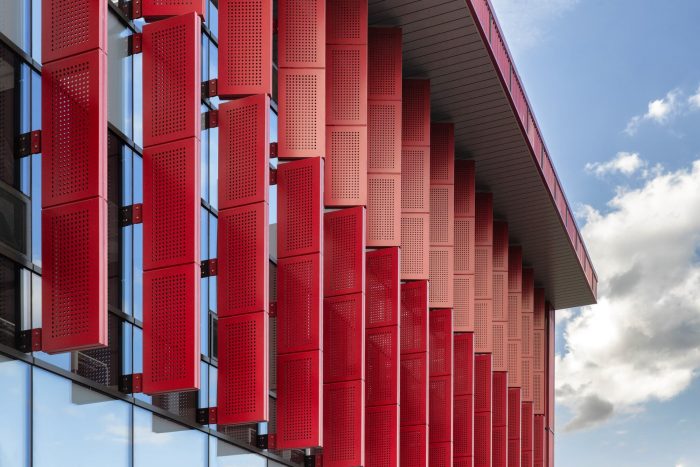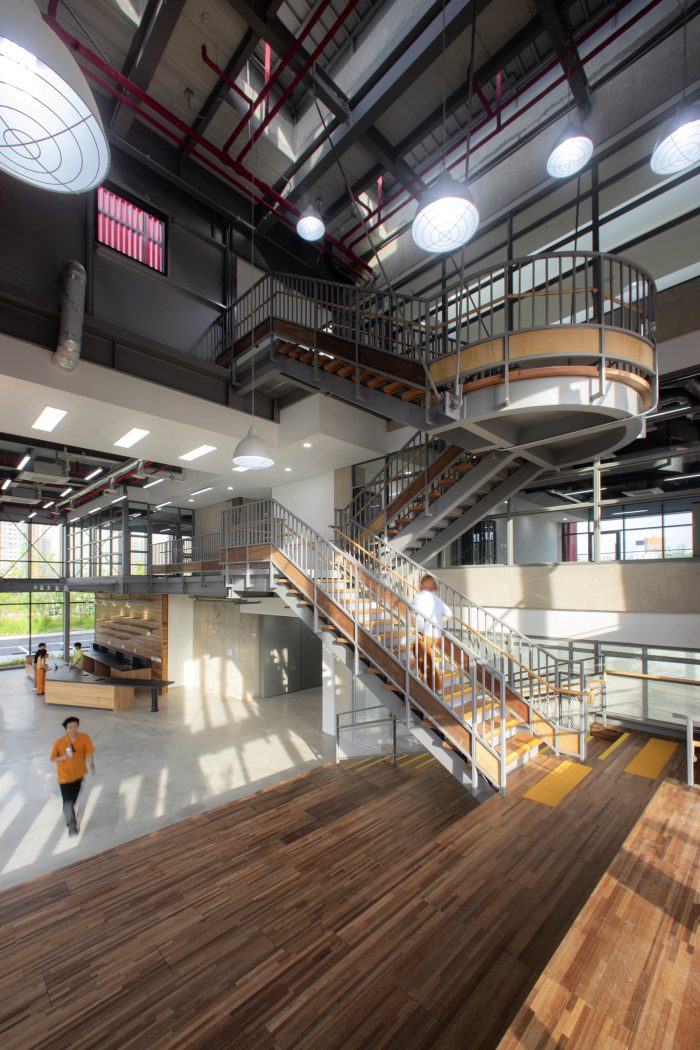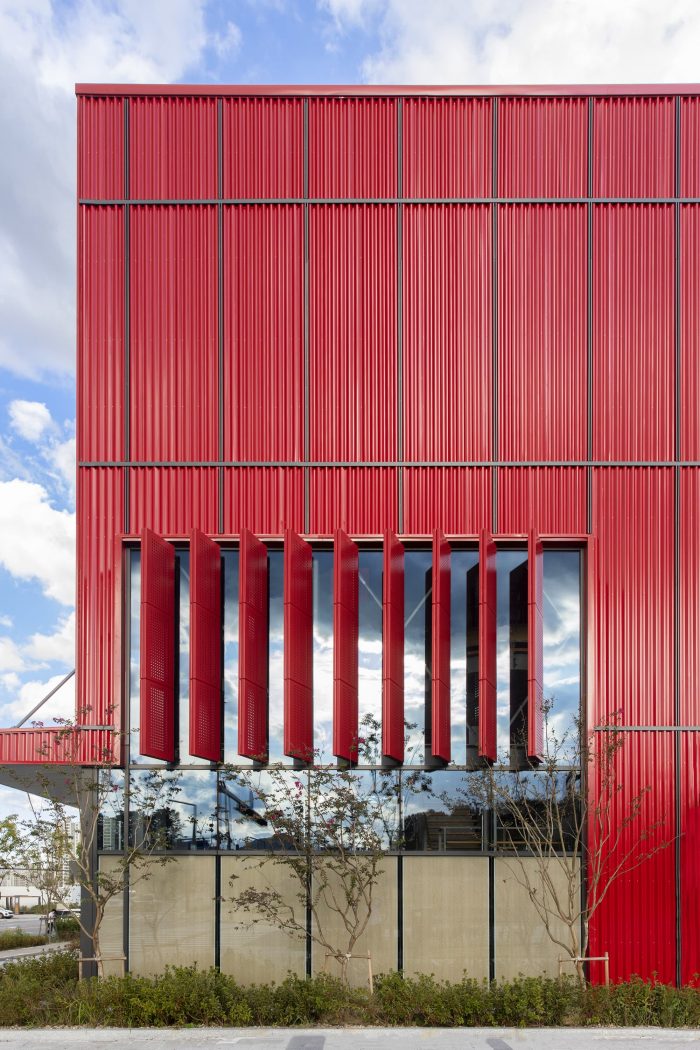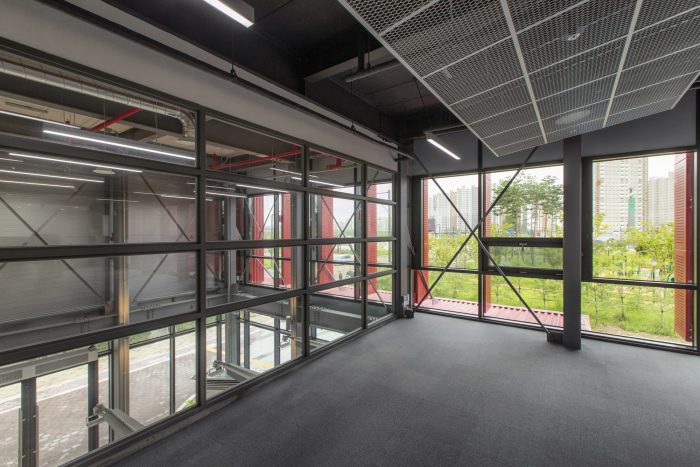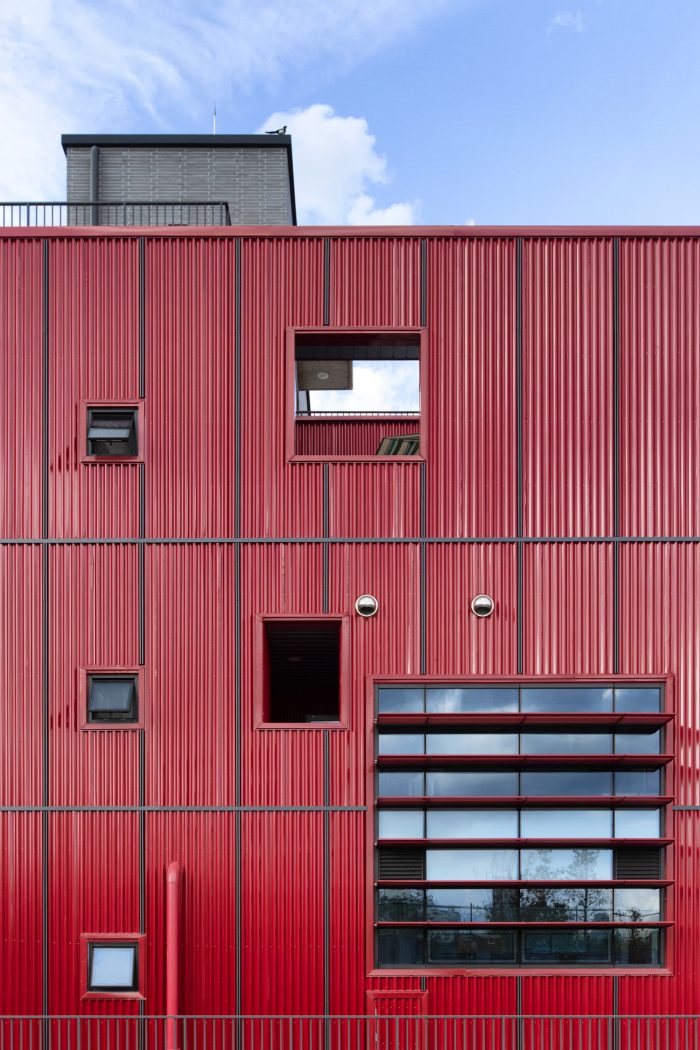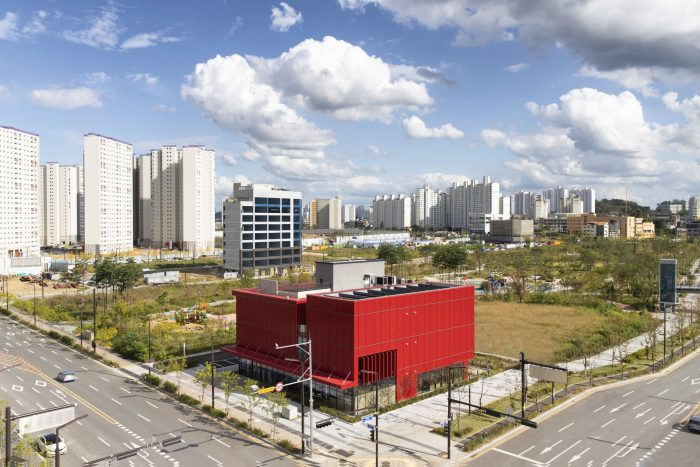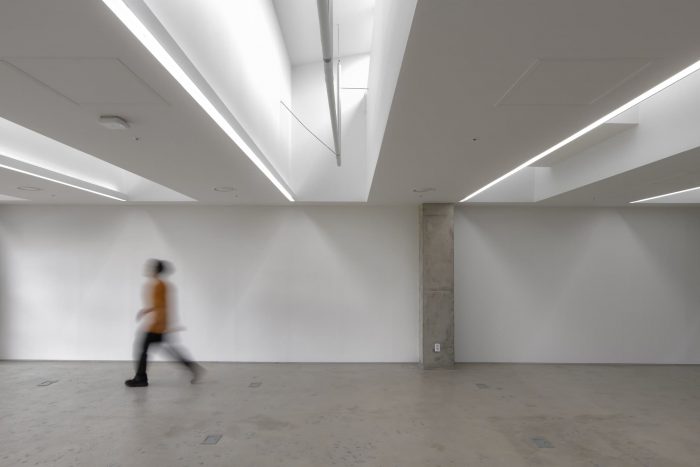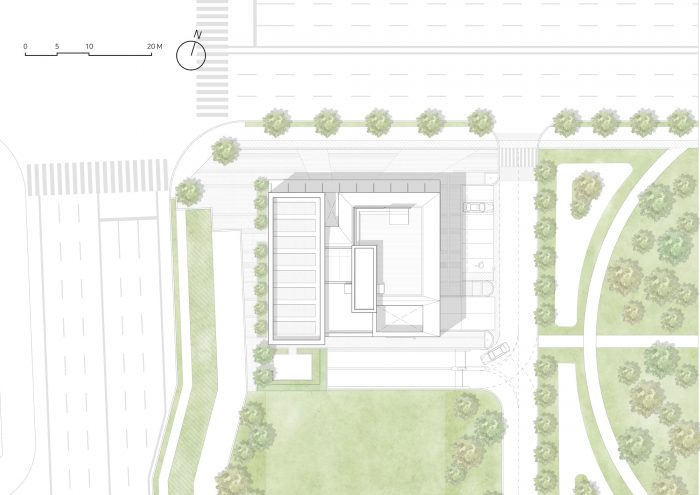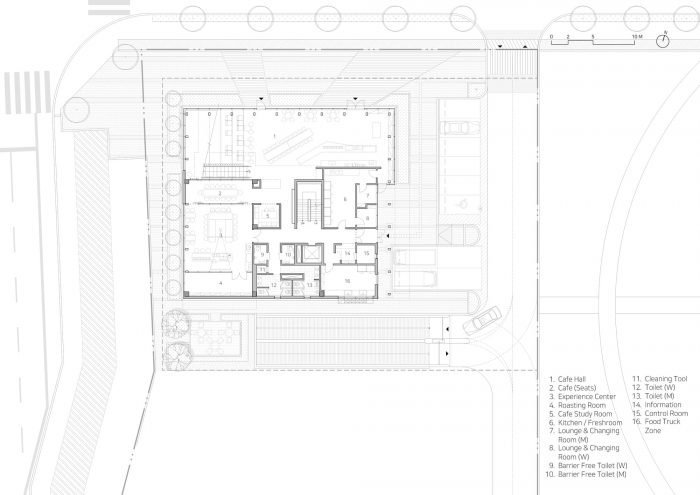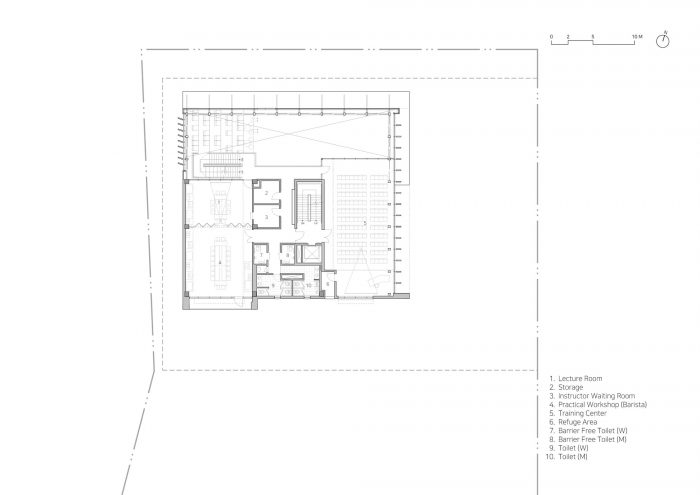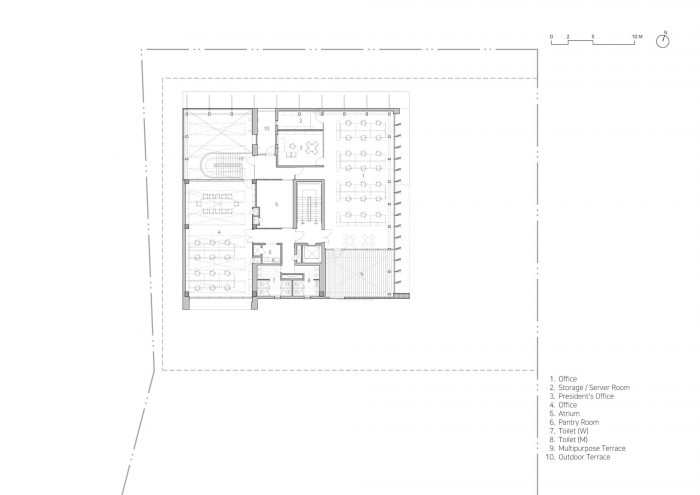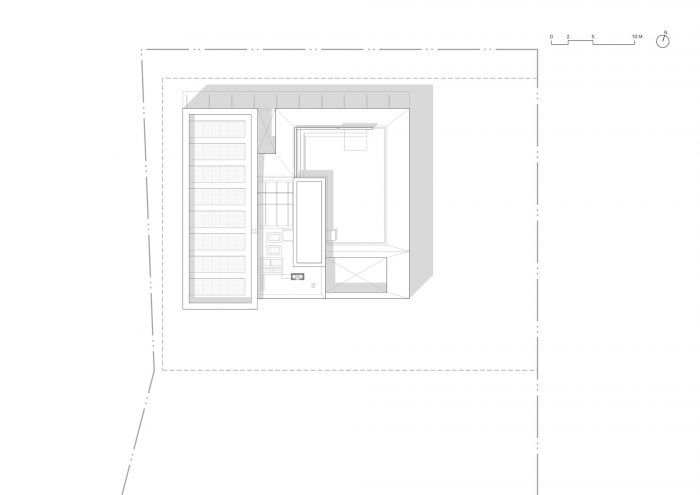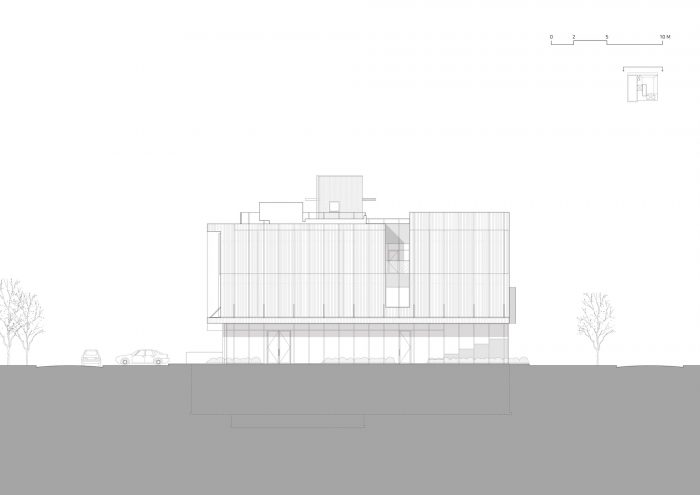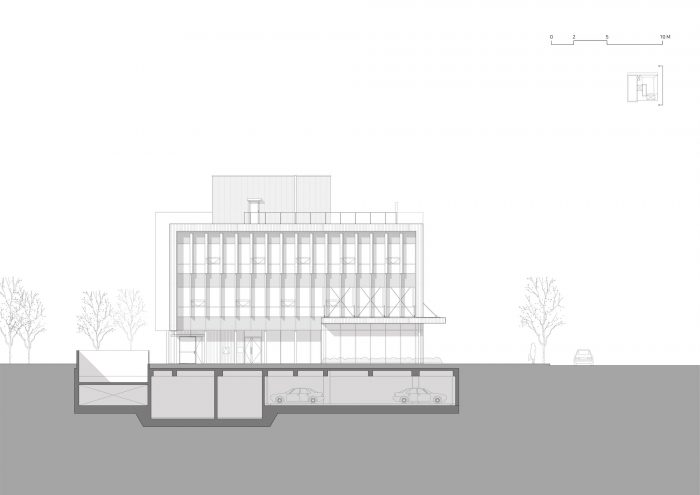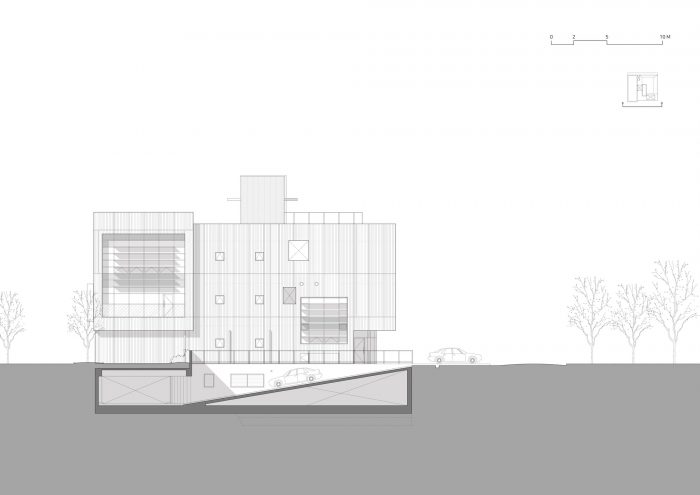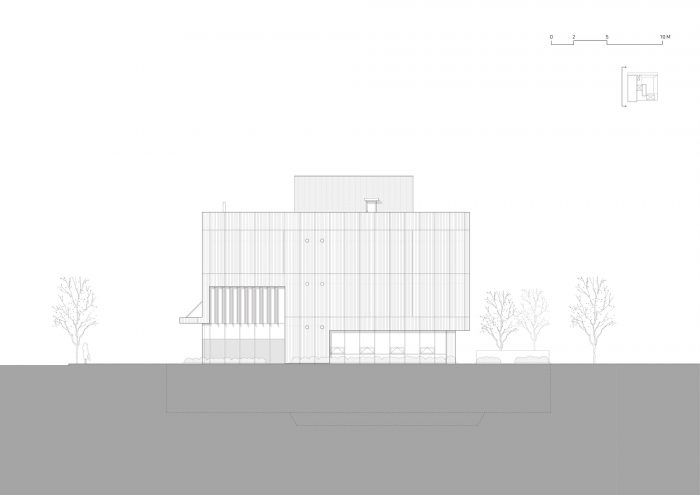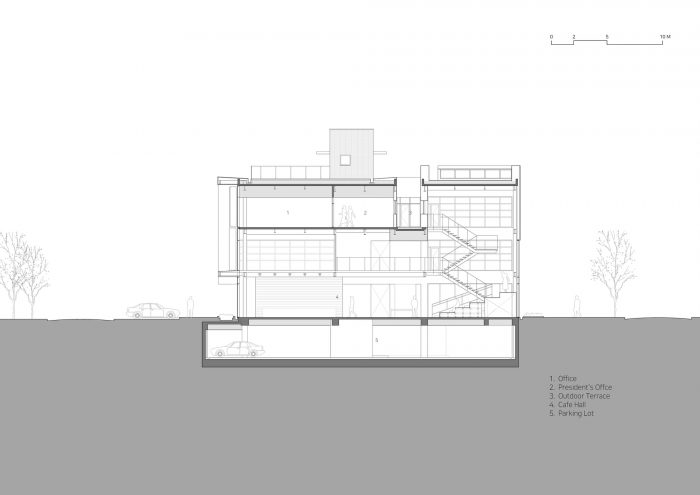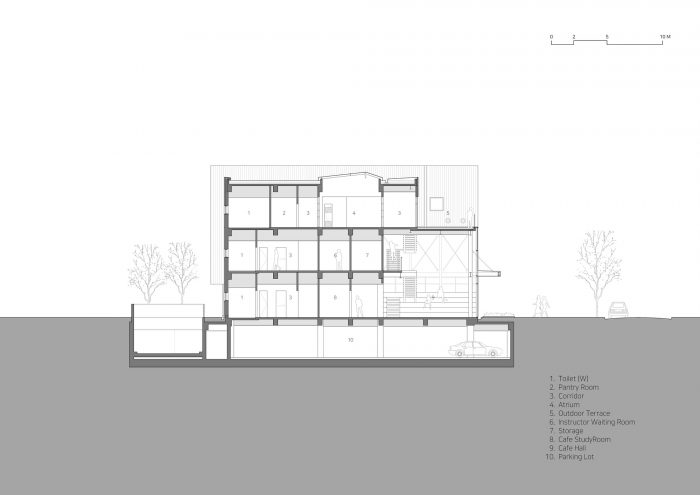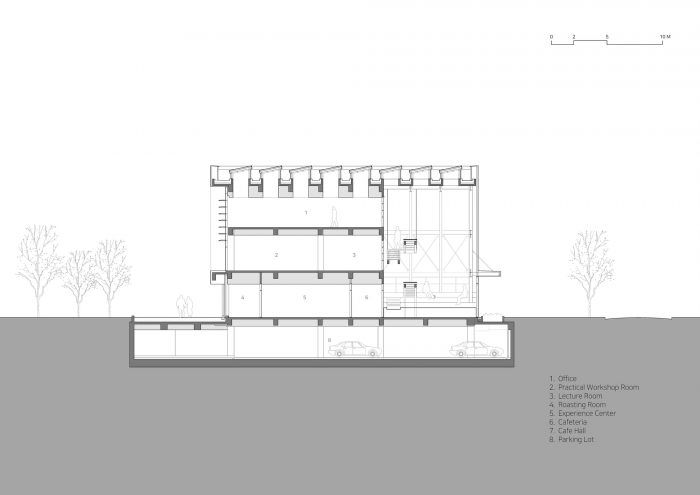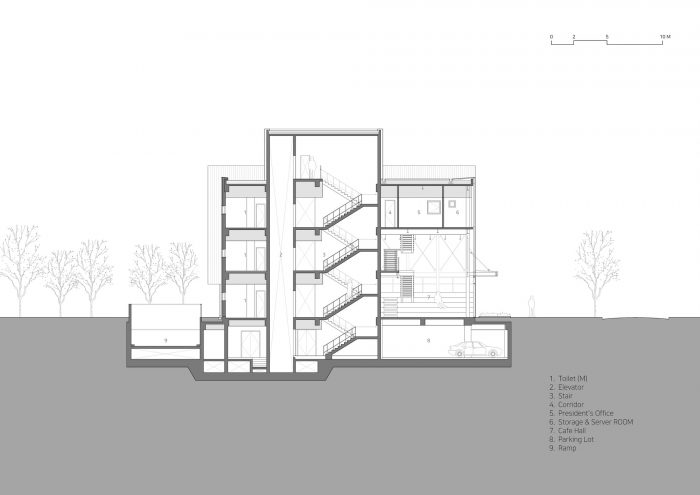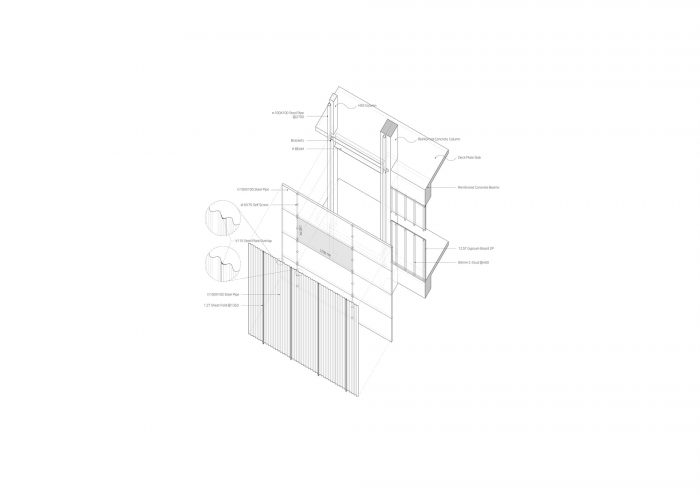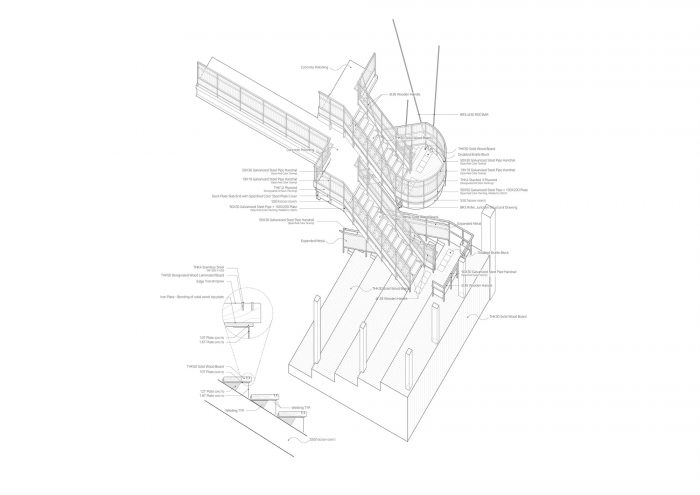华城咖啡文化中心是一个公共设施,位于奉天新城的一个社区公园内。它是一个为老年人服务的设施,在老龄化的现代社会中,老年人的需求正在迅速增加。该中心通过咖啡提供支持老年人再就业教育和文化休闲活动的项目,同时也支持老年人的经济活动,如Nono咖啡馆是华城市有代表性的老年人参与性福利项目之一。这种独特类型的小型公共设施与教育空间、老年人空间、邻里设施和公共工作空间进行了三维结合。
The Hwaseong Coffee Culture Center is a public facility located in a neighborhood park in Bongdam New Town. It is a facility for the elderly, whose demand is rapidly increasing in the aging modern society. The center provides programs that support the re-employment education, and cultural and leisure activities of the elderly through coffee, as well as support the economic activities of the elderly, such as the Nono Cafe, one of Hwaseong City’s representative participatory welfare projects for the elderly. This unique type of small public facility is three-dimensionally combined with an educational space, a space for the elderly, a neighborhood facility, and a public workspace.
一个简单的红色立方体:日常生活中的意外相遇。与大城市不同,在流动人口较少的农村地区,公共文化设施成败的前提是宣传设施的存在,而设计最重要的目标是保证知名度。在一个以绿色为主色调的乡村公园里,为了诱发居民的意识和兴趣,采用了一个出人意料的设计策略,即强烈的 “红立方”。就像艺术家Kurt Perschke于2001年在圣路易斯开始的公共艺术项目 “红球项目 “一样,我们选择了纯红色作为一个物体,为空间和地点创造新的唤起和可能性。小新镇建成后,在一个社区公园的角落里,这是一个有意的引导,想象遇到一个意想不到的简单的红色盒子的情况,它包含了文化、公众和老人的日常生活。
A simple red cube: unexpected encounters in everyday life. Unlike large cities, in rural areas where there is little floating population, the premise of the success or failure of public cultural facilities is to publicize the existence of the facilities, and the most important goal of the design is to secure awareness. In a rural park where green is the main color, an unexpected design strategy of an intense ‘red cube’ was adopted to induce awareness and interest of residents. Like the Red Ball Project, a public art project that artist Kurt Perschke started in St. Louis in 2001, we chose pure red as an object that creates new evoking and possibilities for space and place. After the completion of the small new town, in the comer of a neighborhood park, it is an intentional directing imagining the situation of encountering an unexpected simple red box that contains culture, the public, and the lives of the elderly in the daily.
咖啡和文化的工厂。刺激五种感官的体验的混合。第二个策略是通过构建一个充满原材料和表面的工厂氛围来满足公共建筑成本的不足,并表达动态生产空间的独特空间性。就像通过在一颗咖啡豆中加入其他咖啡豆而创造出具有各种口味和香味的新咖啡一样,咖啡文化中心是一个咖啡与文化相遇的空间,体验与教育相加。它也是一个文化综合体,通过相继加入老人、福利和工作而扩展。Nono咖啡馆和体验中心被配置成一个工厂规模的中央空间,高度为2-3层,在这个大规模的空间里,提供各种项目。我们追求的是一个可以在视觉、嗅觉、听觉、触觉上与咖啡的浓香和甜点的甜味相连接和混合的体验空间。
Factory for coffee and culture: Blending of experiences that stimulate the five senses. The second strategy was to satisfy the insufficient public construction cost through the construction of a factory atmosphere full of raw materials and surfaces and to express the unique spatiality of dynamic production space. Like the blending that creates a new coffee with a variety of flavors and aromas by adding other beans to one coffee bean, the Coffee Cultural Center is a space where coffee meets culture, and experiences are added to education. it is also a cultural complex that expands by adding the elderly, welfare, and jobs one after another. The Nono Café and Experience Center are configured as a factory-scale central space with a height of 2-3 stories, and in the large-scale space, various programs are offered. We pursued a blending space of experiences that could be connected and mixed in a visual, olfactory, auditory, and tactile sense along with the strong aroma of coffee and the sweetness of desserts.
第三空间。拓展到自然和社区。位于公园西北端的咖啡综合体的整个东侧立面向公园开放,将公园引向咖啡空间。作为雷-奥尔登堡说的第三个空间,我们追求的是一个舒适的空间,在那里我们可以和大自然一起休息和充电。一个有中立地、谈话、欣赏人的个性和人格的地方,容易接近,玩乐的心情,和清爽的气氛。奥登堡强调的第三空间的六个特征也是咖啡文化中心的重要空间主题。希望通过这种方式实现的第三空间能够扩展成一个文化和空间的意义交流社区,在这里,年轻一代和老一代、地区和社区都会相遇。
The 3rd Space: Expanding into nature and community. The entire eastern facade of the coffee complex, located at the northwestern end of the park, opens toward the park, drawing the park into the coffee space. As the third space that Ray Oldenburg said, we pursued a comfortable space where we could rest and recharge with nature. A place with neutral ground, conversation, appreciation of human personality and individuality, easily accessible, Playful mood, and refreshing atmosphere. The six characteristics of the third space that Oldenburg emphasized are also important space themes in the Coffee Cultural Center. It is hoped that the third space realized in this way will expand into a cultural and spatial community of exchanging meanings where young and older generations, regions, and communities meet.
Architects: TAAL Architects
Area : 622 m²
Year : 2020
Photographs :Kim JeongHyun
Landscape : PH6 Design Lab
Lead Architect & Principal : Seo Jiyoung
Lead Architect & Partner : Zo Hangman
Partner Designer : Im Jonghoon
Project Designer : Kim Garim
Design Team : Yeom Junhyeok, Hur Eunseok
Graphic Design : Ha Hyeongwon
City : Ansan-si
Country : South Korea

